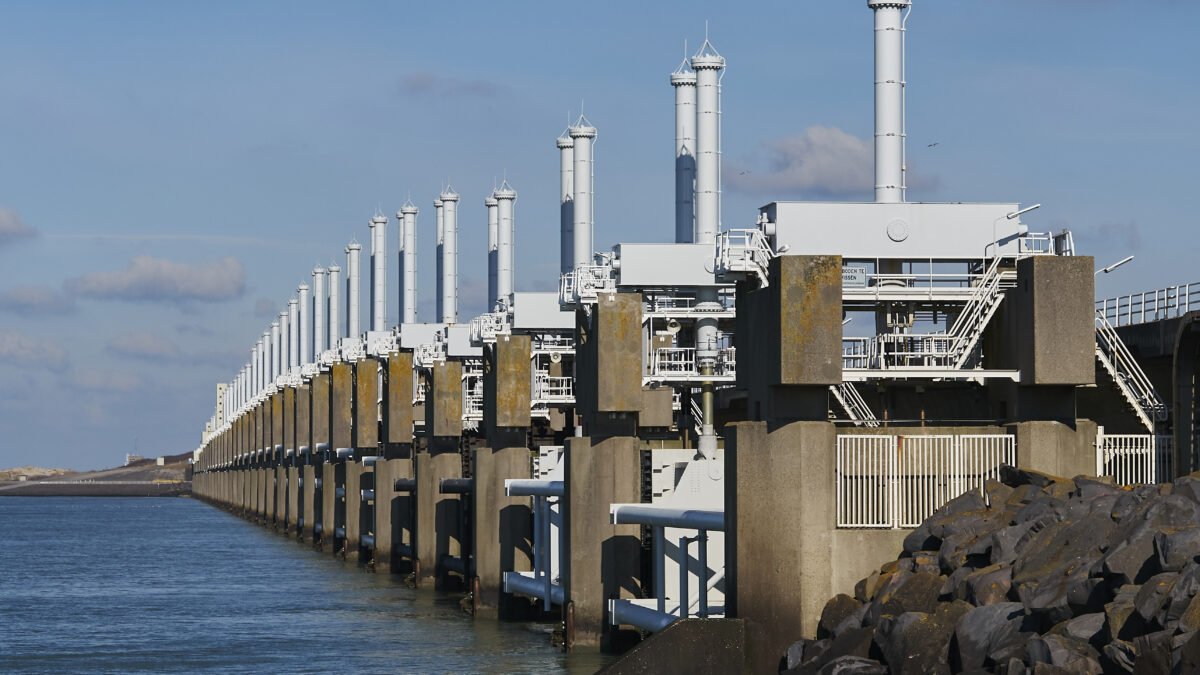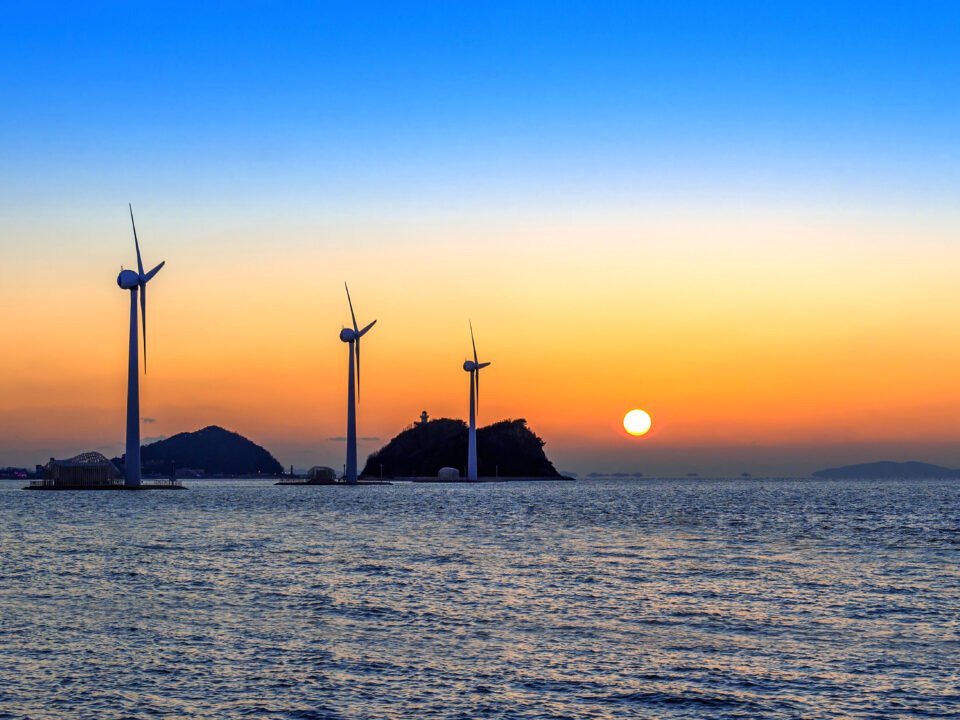In the pursuit of sustainable and renewable energy, the world has turned its gaze toward the vast and powerful oceans. Among the many renewable energy sources, tidal power station technology stands out as one of the most promising and reliable. Unlike solar or wind energy, tidal energy is entirely predictable, offering consistent power generation with minimal environmental disruption. This blog explores the science, technology, and global potential behind tidal power stations and how they could revolutionize the energy landscape of the future.
Understanding Tidal Power Station Technology
A tidal power station harnesses the kinetic and potential energy generated by ocean tides—caused by the gravitational pull of the moon and the sun on Earth’s water bodies. When the tides rise and fall, large volumes of water move in predictable patterns. This movement can be captured and converted into electricity using specialized turbines and generators.
The predictability of tidal cycles makes tidal energy a dependable renewable energy source, unlike wind or solar power, which depend on weather conditions. Tidal energy systems are typically designed to generate electricity during both the incoming (flood) and outgoing (ebb) tides, ensuring near-continuous energy production.
How a Tidal Power Station Works
A tidal power station operates similarly to a hydroelectric dam but uses the movement of seawater instead of river water. The basic components of a tidal power station include:
- Barrage or Dam Structure:
Built across the mouth of an estuary or a tidal basin, it traps seawater during high tide and releases it during low tide through turbines. - Turbines:
These are the heart of the system, converting the kinetic energy of moving water into mechanical energy, which is then transformed into electricity through generators. - Generators:
Attached to the turbines, they convert mechanical rotation into electrical energy for transmission to the power grid. - Control Systems:
Automated control systems manage water flow, turbine speed, and electricity output, ensuring optimal efficiency and minimal ecological impact.
In some modern designs, tidal stream systems use underwater turbines placed directly in fast-moving tidal currents, avoiding the need for large dams and minimizing disruption to marine habitats.
Types of Tidal Power Stations
Tidal energy can be harnessed through several different technologies, each suited to specific geographical and environmental conditions:
1. Tidal Barrage Systems
These are the most traditional form of tidal power stations. They use a dam-like structure to control the flow of seawater between tides. Electricity is generated as the trapped water flows through turbines in both directions.
Example: The La Rance Tidal Power Station in France, operational since 1966, remains one of the world’s largest and most successful tidal barrage systems.
2. Tidal Stream Generators
Tidal stream technology uses underwater turbines, similar to wind turbines, that capture the kinetic energy of moving tides without needing large-scale barriers. These systems are less invasive and easier to install in tidal currents.
Example: The MeyGen project in Scotland is one of the largest tidal stream farms in operation.
3. Dynamic Tidal Power (DTP)
Still largely experimental, DTP involves building long dams extending from the coast into the sea, creating differences in tidal phases that can be exploited to produce power.
4. Tidal Lagoon Systems
These are artificial enclosures built in coastal areas that trap water at high tide and release it at low tide through turbines.
Example: The proposed Swansea Bay Tidal Lagoon in Wales aims to demonstrate the viability of this approach.
Advantages of Tidal Power Stations
The benefits of tidal power station technology are numerous and significant for the global energy transition:
- Predictability and Reliability:
Tidal patterns are governed by lunar cycles, making tidal energy one of the most predictable renewable sources available. - Low Carbon Emissions:
Once constructed, tidal stations emit virtually no greenhouse gases, contributing significantly to climate change mitigation. - High Energy Density:
Water is around 800 times denser than air, so tidal turbines can generate more power from slower flows compared to wind turbines. - Longevity:
Tidal power stations can operate for decades—often longer than wind or solar installations—with relatively low maintenance. - Local Economic Development:
Construction and maintenance of tidal power infrastructure can generate employment and stimulate local economies, especially in coastal regions.
Challenges Facing Tidal Power Technology
Despite its potential, tidal power station technology faces a number of challenges:
- High Initial Costs:
Building underwater infrastructure and coastal barrages requires substantial upfront investment compared to wind or solar installations. - Limited Suitable Sites:
Effective tidal energy production depends on specific geographical conditions—strong tidal ranges or fast-moving currents—which are not available everywhere. - Environmental Concerns:
While generally eco-friendly, tidal barrages can disrupt local ecosystems, affect fish migration, and alter sediment flow patterns. - Technological Maturity:
Tidal power technology is still in the developmental and demonstration phase, meaning costs need to fall and efficiencies must rise before large-scale deployment becomes viable. - Grid Integration:
Coastal locations often require new infrastructure to connect tidal power stations to national electricity grids.
Global Examples of Tidal Power Success
Several countries are leading the charge in developing tidal power station projects:
- France: The La Rance Tidal Power Station, operational for over 50 years, produces about 240 MW of power—enough to supply 225,000 homes.
- South Korea: The Sihwa Lake Tidal Power Station, with 254 MW capacity, is currently the world’s largest tidal power plant.
- United Kingdom: The UK hosts multiple tidal projects, including MeyGen, which aims to expand to 398 MW, showcasing the scalability of tidal stream systems.
- Canada: The Bay of Fundy in Nova Scotia has one of the world’s highest tidal ranges and serves as a prime testing ground for advanced tidal turbines.
The Future of Tidal Power Station Technology
As technology advances, tidal power station efficiency and cost-effectiveness are steadily improving. Innovations in materials, underwater robotics, and turbine design are helping reduce installation and maintenance costs. Furthermore, hybrid renewable systems—combining tidal, wind, and solar energy—are being explored to balance energy output and improve grid stability.
Governments and private investors are increasingly recognizing tidal power’s long-term potential. With continued research, policy support, and sustainable design, tidal energy could become a cornerstone of global renewable energy portfolios within the next few decades.
Conclusion
Tidal power station technology represents one of humanity’s most promising paths toward clean, predictable, and sustainable energy. By harnessing the rhythmic force of the oceans, we can tap into an energy source that is as ancient as the moon itself and as powerful as the tides it governs. Although challenges remain, the steady progress in technology and the growing global commitment to renewables suggest a bright future for tidal power.
As nations race toward net-zero emissions, the world’s oceans may hold the key—quietly rising and falling with the promise of endless, renewable power.



